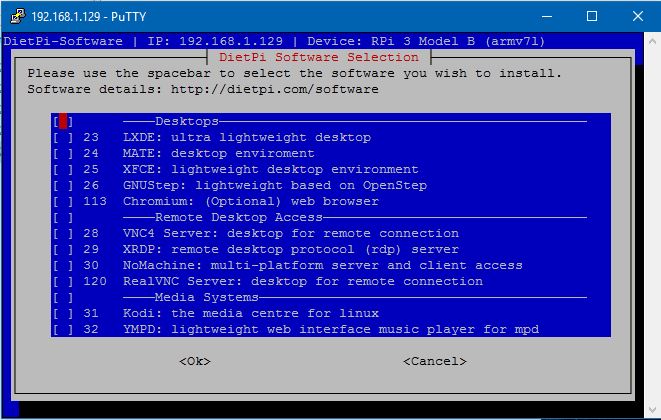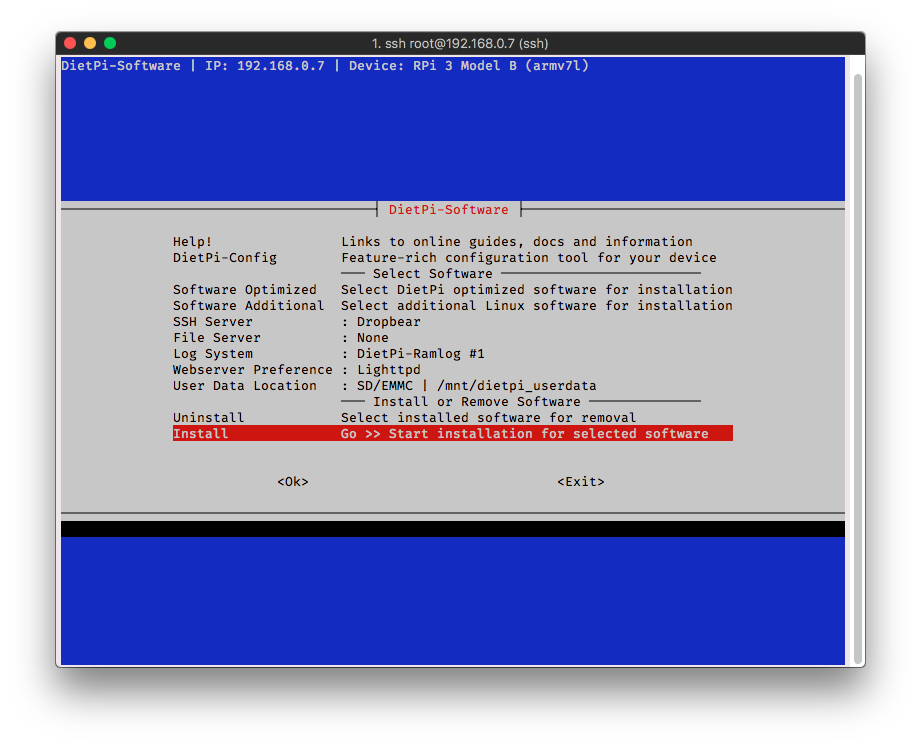

- Dropbear ssh dietpi config install#
- Dropbear ssh dietpi config windows#

Staking/Solo Mining = Keeping some of your Gridcoins in an online wallet to help secure the network.
Dropbear ssh dietpi config install#
Gridcoin = A cryptocurrency (abbreviated as GRC) which rewards users for staking coins and doing computational work for scientific projectsīOINC = The Berkeley Open Infrastructure for Network Computing, a program you install on your computer that volunteer’s your computer’s spare computational ability for scientific projects of your choosing. Wait, pool? Stake? Rewards? Nodes? Wallets? What do all these words mean? Let’s do a quick rundown if you aren’t familiar with the terminology: This is a screenshot from the main page at, we encourage you to check it out. Solo Mining also also requires that your Pi be online all the time and staked, whereas Pool mining does not. The main difference is that Solo Mining requires approx $50 in Gridcoin to get started whereas pool mining has no minimum but earns you slightly less rewards. This guide is provided as-is with no warranty and you assume all risks by following it, be sure you double-check these instructions to make sure they make sense and are correct.īefore we get started, if you want to earn Gridcoin, you should decide if you want to do Solo Mining or Pool Mining.

If you are not using external/networked storage, this means you need an absolute minimum 8GB SD card, though more is always better! We suggest a 16GB or higher SD card for stability reasons.
 * A note about MicroSD card size: This installation will take a minimum of 1.2GB, but that is not including BOINC storage (if you are not storing data on a network share/external drive) or the Gridcoin blockchain (currently about 4GB). This is not essential but is suggested to prolong the life of your SD card.
* A note about MicroSD card size: This installation will take a minimum of 1.2GB, but that is not including BOINC storage (if you are not storing data on a network share/external drive) or the Gridcoin blockchain (currently about 4GB). This is not essential but is suggested to prolong the life of your SD card. Dropbear ssh dietpi config windows#
A windows network share (SAMBA/CIFS) OR an external hard drive/flash drive to store Gridcoin/BOINC data onto. About $50 worth of GRC if you want to do solo mining/staking with Gridcoin, otherwise $0 if you want to do pool mining or no mining at all. An ethernet cable to connect your Pi to your home network/router. Heatsinks are generally advised for this model of Pi regardless. Due to the CPU usage that BOINC causes, a heatsink and/or fan is basically essential for this setup if you will be running BOINC on your pi. Raspberry Pi 3x and earlier will not work because they don’t have 64-bit processors. This guide will probably work on later models or any other development board w/ a 64-bit version of DietPi available for it. You can get one for about half the price and help the environment by getting one used on eBay. A Raspberry Pi 4 or 4b+ with greater than 2GB of RAM and suggested 16GB MicroSD card or larger*. ✔️ People who want to run BOINC on a Raspberry Pi and receive Gridcoin from pool mining ✔️ People who want to run BOINC on a Raspberry Pi and receive Gridcoin for solo mining/staking ✔️ People who just want to run BOINC on their Raspberry Pi and don’t care about all this gridcoin stuff ✔️ People who want to run a Gridcoin node or solo stake This guide will work for the following situations, you can choose your own adventure! If you just want to install BOINC but not Gridcoin, you can just skip the Gridcoin sections, but why not earn rewards for your work? This guide was written in July 2021 and should be relevant for some time. If you have been trying to run BOINC on a Raspberry Pi, you may have found that there is a TON of information out there, much of which is outdated, says it can’t be done, or simply doesn’t work.








 0 kommentar(er)
0 kommentar(er)
